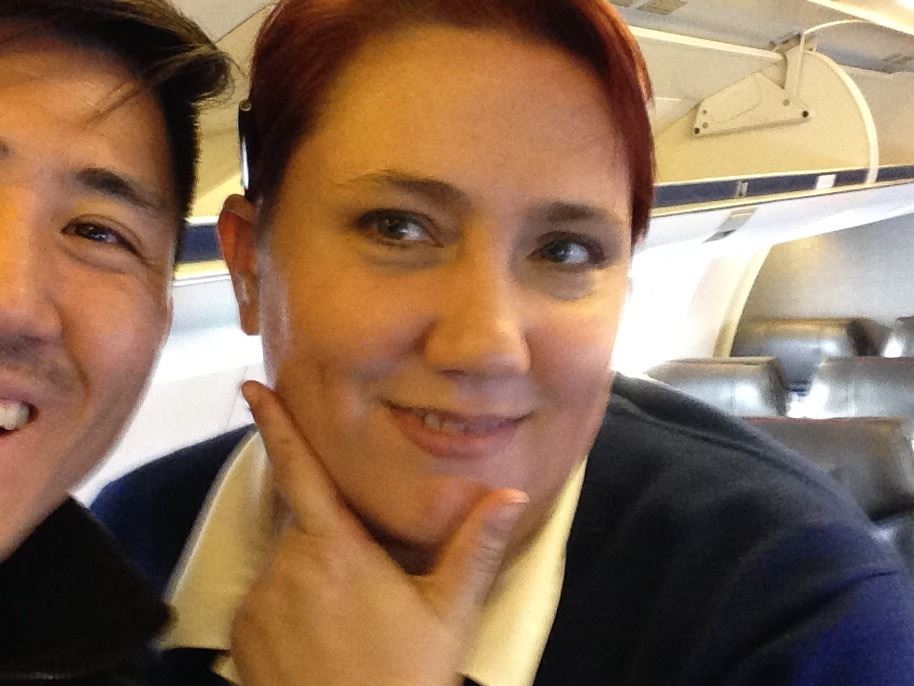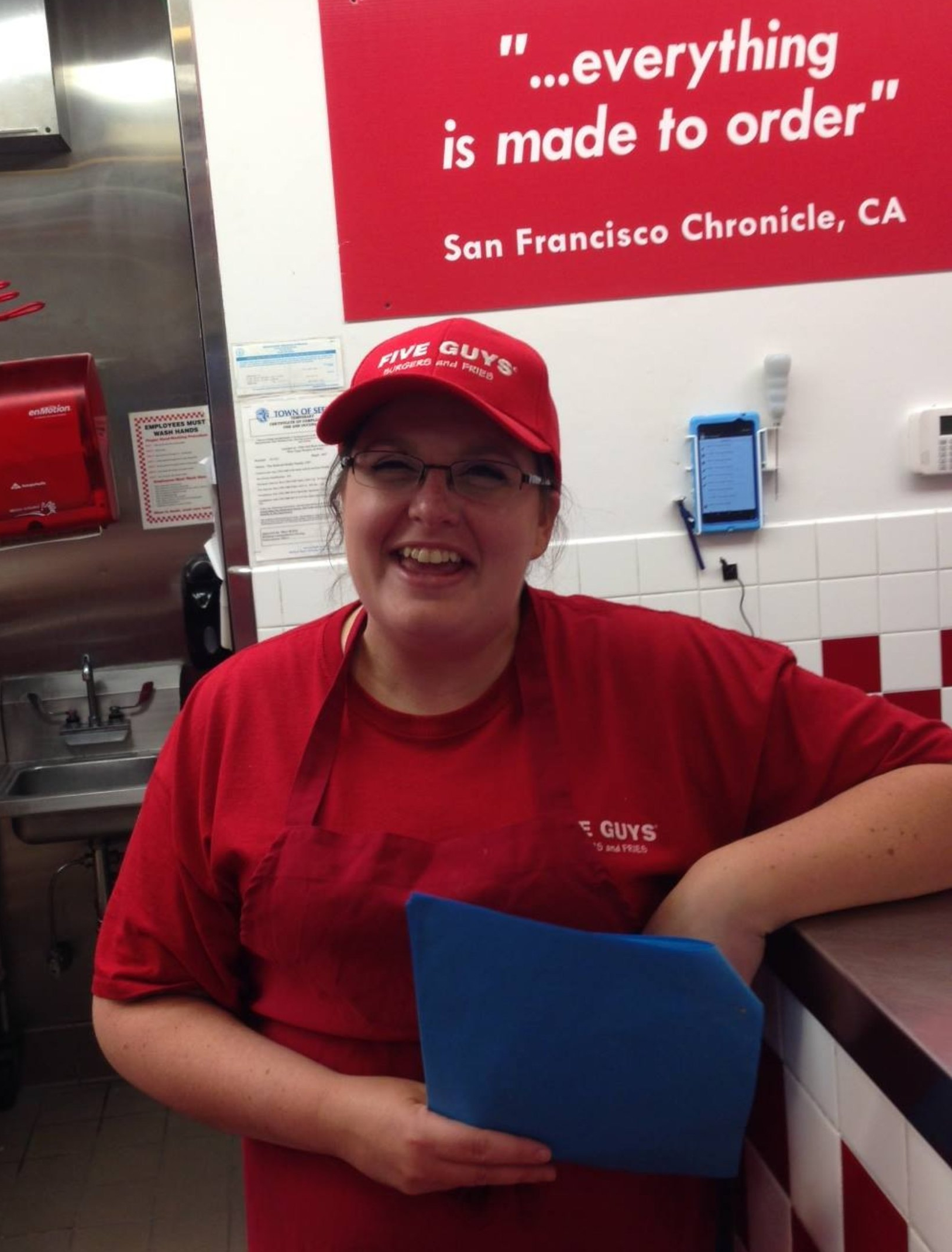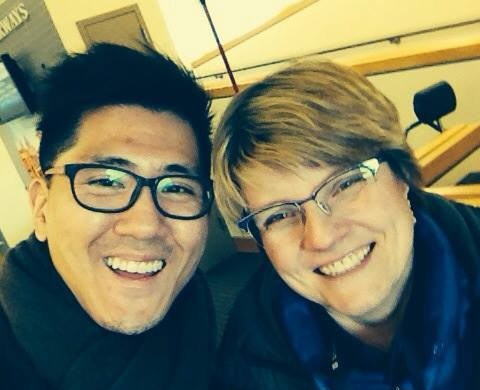I’d like to express my sincere gratitude and appreciation to Erica Bird (maybe Erika Byrd: pictured below), a flight attendant on this morning’s American Airlines flight AA3611.

From the get go she was very considerate.
I have a backpack that turned out to be ever so slightly big for the overhead cabin. Putting it under my seat meant I would be squeezed. I wondered if I should go back to gate check it. The first thing she asked was whether I had a connecting flight. She showed consideration for my time constraints! (It can take a while to retrieve gate checked bags) Most would have just told me to go ahead and gate check it. I would have been fine with that, but the fact that she showed consideration was meaningful to me.
She then asked me to hold on to my bag for a bit. I soon realized that she was considering the possibility that I may be able to stow it under the seat next to me in case nobody showed up. I did eventually luck out because nobody sat next to me! The co-creation that happened between her and I was very valuable to me. What a beautiful example of a micro-innovation!
What blew me away the most was when she later came by with her cart to give out snacks and beverages. She said “Hello Mr. Lim.” I was taken aback for a second. I’ve never had a flight attendant greet me by my name on a coach flight (par for the course when I fly business, yes.) It turns out she learns every passenger’s last name beforehand! I don’t know if I just haven’t flown American in a long time or if Erica is unique. Regardless, I appreciated her efforts so much.
In my mind, it’s these small things one does to show respect and consideration for another human being in a business context that sets apart one employee or a brand from another. I do not wish to take them for granted.
I hope Erica gets the recognition she deserves.
Thank you, Erica!
UPDATE: Thank you American Airlines!



